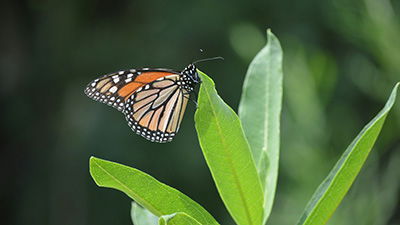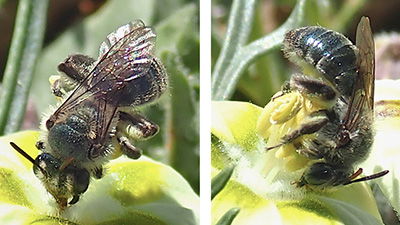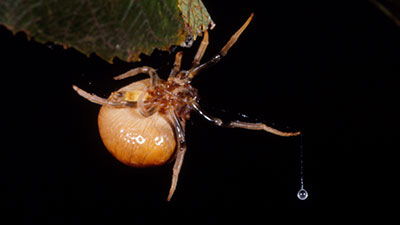
Snails and Their Unique Genetic Variations
The story of the three snails
News Source
- Science: “Snails Ship Out on Scrambled Eggs”
There is a family of smooth-shelled marine snails called Janthinidae that passively float around subtropical oceans suspended from bubble pontoons waiting to not-so-passively grab a bite of passing jellyfish. Their flotation devices are made of mucus secreted from the janthinid foot and folded into air-trapping pockets. “If you’re into mucus, it’s a fascinating mucus,” says ecologist Celia Churchill. “It’s almost like bubble wrap.”
Puzzling over the evolutionary origin of this flotation adaptation, Churchill’s team has compared four DNA reference points to reconstruct the snail evolutionary tree “which confirms that janthinids are derived from Epitoniidae (wentletraps).”1 Epitoniids are another family of snails that live on the bottom of the ocean and do not float. With shells resembling spiral staircases, epitoniids munch on sea anemones and coral. And their females tether their eggs (and their small mates) with “elastic mucus threads.”2
Convinced that the presence of some genetic similarities confirm a common ancestry for these two kinds of snails, the researchers sought a transitional form and believe they found it in one genus of the Janthinidae family: the Recluzia.
Convinced that the presence of some genetic similarities confirm a common ancestry for these two kinds of snails, the researchers sought a transitional form and believe they found it in one genus of the Janthinidae family: the Recluzia. Unlike the Janthina genus, only the female in the Recluzia species examined builds bubble boats, and the Recluzia’s mucoid bubbles also provide a platform for both eggs and young snails. The bubble floats of some species of female janthinids carry eggs but not juveniles. And one particular species, Janthina janthina, uses bubble rafts exclusively for flotation with all genders and ages building their own rafts.3
Therefore, with many permutations of bubble raft biology in view, the researchers believe they have discovered all the pieces of this evolutionary puzzle.
Churchill and colleagues propose that the common ancestor of all these snails was a bottom dwelling intertidal species4 that wrapped its eggs in mucus. then one day a bubble got trapped in the mucus and buoyed some lucky primordial snail up to the surface where it managed to survive environmental challenges long enough to discover abundant edible jellyfish. eventually enough snails did this long enough to thrive at the surface and figured out how to stay there. somehow the males, which in epontiids are tethered to the egg mass, “also learned to fabricate their own, egg-free life rafts.” and the rest is snail history.
Commenting on the report published in Current Biology, Berkeley biologist David Lindberg said the janthinids “are an incredibly extravagant group with an extraordinary evolutionary history.” Praising Churchill’s team for elucidating the stepwise evolution of the bubbles, he adds, “You could have all that diversity, but if you can't order it, you really are just telling stories.”
A common Designer explains the presence of genetic similarity between different kinds of creatures.
Lindberg’s comment, when considered in the light of what these researchers are actually proposing, really does sum up the matter: they “are just telling stories.” They are basing all of their evolutionary conclusions on the assumption that some genetic similarity confirms common ancestry of two families of dissimilar marine molluscs. A common Designer explains the presence of genetic similarity between different kinds of creatures.
If, however, these two sorts of snails were of the same original created kind, then diversification based on the genetic options already available in the genome has taken place, allowing varieties of snails to fill various habitats. That would not represent evolution but just speciation. Indeed, the diversity of bubble raft biology within the janthinid family likely does represent just such diversification of the bubble-rafting snails within various habitats. But if the bottom-dwelling epontiids and top-dwelling janthinids are not of the same created kind, then they do not share a common ancestry, as living things reproduce and vary within their created kinds.
What we do know from the Bible is that God made each kind of organism fully functional and capable of coping with different environments through genetic variations. No evolution has happened here. The researchers have simply discovered the possible reproductive function associated with the buoyant bubble wrap of janthinid gastropods.
Further Reading
- Get Answers: Design in Nature
For More Information: Get Answers
Remember, if you see a news story that might merit some attention, let us know about it! (Note: if the story originates from the Associated Press, FOX News, MSNBC, the New York Times, or another major national media outlet, we will most likely have already heard about it.) And thanks to all of our readers who have submitted great news tips to us. If you didn’t catch all the latest News to Know, why not take a look to see what you’ve missed?
(Please note that links will take you directly to the source. Answers in Genesis is not responsible for content on the websites to which we refer. For more information, please see our Privacy Policy.)
Footnotes
- Celia K. C. Churchill, Diarmaid Ó Foighi, Ellen E. Strong, and Adriaan Gittenberger, “Females Floated First in Bubble-rafting Snails,” Current Biology 21, no. 19 (October 11, 2011): 802–803, doi:10.1016/j.cub.2011.08.011.
- Ibid.
- Ibid.
- Ibid.
Recommended Resources

Answers in Genesis is an apologetics ministry, dedicated to helping Christians defend their faith and proclaim the good news of Jesus Christ.
- Customer Service 800.778.3390
- Available Monday–Friday | 9 AM–5 PM ET
- © 2025 Answers in Genesis




